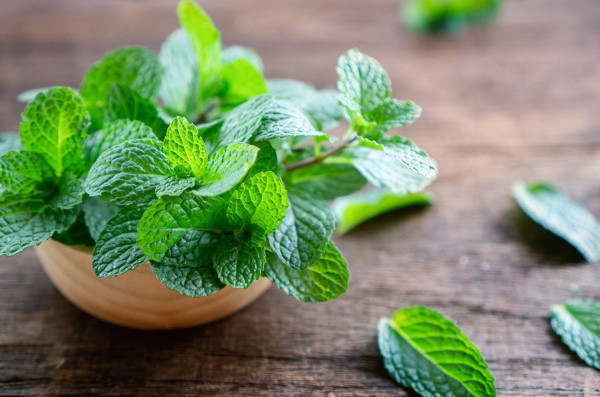The best way to grow mint
Growing mint: Mint is an aromatic plant that has been around for centuries. Mint is one of the plants that is used in many sweet and salty foods, as well as perfumes, mouth fresheners, and toothpastes. It also gives tea its distinctive taste and smell. Due to all of the above, many people want to grow mint at home so that they can have it at their fingertips.

Method of cultivating mint
One of the easiest plants to grow and propagate is mint
Mint seedlings can be purchased from agricultural nurseries or garden supply stores. Also, you can plant a branch of the mint plant that you have already planted by cutting a branch about 10 cm long. The branch must have leaves. Within a week of placing the head branch in a glass of water, and removing the leaves from the submerged part, you will see white roots appear, and in about another week, it will reach the right length, and you will need to water regularly. If necessary, add water to the cup to prevent rotting.
The right time to plant mint: Mint is a flexible plant, but it is best to plant it in spring or autumn.
Plant the plant so that the roots are directly under the soil, and plant it alone in the pot since the mint plant’s roots grow quickly and invade other plants’ roots. In order to plant a plant, you will need a container with a width of (12-16) inches, and if you want to plant more than one seedling in the pot, you should leave enough space between each seedling.
When planting mint, choose a place where it will receive sunlight in the morning and partial shade in the afternoon so that it does not dry out, and place the pot on a window.When planting mint, choose a place where it will receive sunlight in the morning and partial shade in the afternoon so that it does not dry out, and place the pot on a window.
You can add fertilizer to the soil every few weeks, and you can add biological cover to maintain the soil moisture. The pH of the soil should be between (6-7) to get the best results.
Mint should be watered regularly, especially if it is in direct sunlight, and since the plant is watered without being submerged in water, the soil should be checked to ensure it is moist.
To encourage lateral growth of the plant, which helps it to produce full leaves and a better crop, trim the upper part of the plant.
The mint buds are pruned when they appear on the stem, usually between June and September, in order to prevent flowers from opening. As a result, the mint growth is kept under control and the harvest season is extended.
Divvying the mint plant every two or three years: If mint is planted in a container, the pot will narrow after two or three years. Mint has a strong aroma and flavor.
From late spring to early autumn, you can pick mint leaves if necessary, provided that the number of picked leaves does not exceed one third, and before picking more, the leaves have the opportunity to grow again.
Mint roots should be protected with biological covers before the frost season, and their leaves and stems should be cut.
Mint plant properties
Mint is a member of the Lamiaceae family. The mint plant has square stems that are 10 to 120 cm long, and its leaves are oblong or lance-shaped, covered with hairs, and have their edges pointed. Different types of mint have jagged leaves and their colors vary from dark green, grayish green, purple, blue, or pale yellow.
Mint types
There are several types of mint that can be grown and propagated at home, and they are planted and grown in similar ways. It is important that varieties of mint are planted far from each other so that pollen from one type does not pollinate with pollen from another, thus allowing the different types of mint to be distinguished.
Peppermint
spearmint
fragrant mint or Apple mint.
Chocolate mint.
European mint (pennyroyal).
Watermint.
Field mint (Corn or Field Mint)
Lavender mint.
